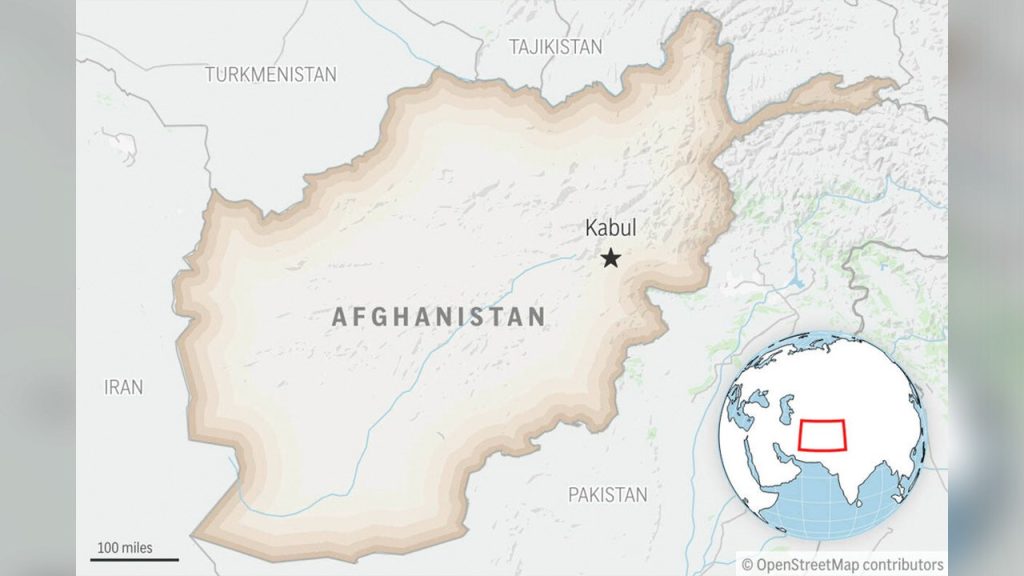Devastating Earthquake Strikes Eastern Afghanistan, Leaving Hundreds Dead and Injured
In the late hours of Sunday night, a powerful magnitude 6.0 earthquake shook eastern Afghanistan near the Pakistani border, bringing tragedy to an already vulnerable region. The earthquake struck at 11:47 PM, with its epicenter located approximately 17 miles east-northeast of Jalalabad in Nangarhar province. The shallow depth of the quake—only 5 miles below the surface—amplified its destructive potential, as shallower earthquakes typically cause more extensive damage than their deeper counterparts. According to initial reports from the Kunar Disaster Management Authority, at least 250 people have lost their lives, with another 500 suffering injuries. These numbers, however, are expected to rise as rescue efforts continue in the affected areas.
The full extent of the disaster remains unclear due to the challenging topography of the region. Many affected communities are located in remote, mountainous areas with limited access to roads and communication infrastructure, complicating both assessment and relief efforts. Shortly after midnight, a 4.5 magnitude aftershock struck the same province, potentially causing additional damage to structures already weakened by the initial earthquake. The combination of the main shock and subsequent tremors has left many buildings damaged or destroyed, with families displaced and essential services disrupted across the affected region.
Afghanistan’s geographic position makes it particularly susceptible to seismic activity. The country sits at the meeting point of the Indian and Eurasian tectonic plates, specifically along the Hindu Kush Mountain range, creating a zone of frequent and sometimes severe earthquake activity. This geological reality, combined with widespread poverty and infrastructure challenges, leaves Afghanistan’s population especially vulnerable to natural disasters. Many buildings in rural areas are constructed without adherence to earthquake-resistant standards, often using mud bricks, stone, and minimal reinforcement—materials that can quickly collapse during significant ground movement.
This earthquake evokes painful memories of the October 7, 2023 disaster, when a 6.3 magnitude earthquake and powerful aftershocks devastated parts of Afghanistan. The death toll from that event remains disputed, with Taliban government figures suggesting around 4,000 fatalities, while United Nations estimates placed the number closer to 1,500. Regardless of the exact figure, that earthquake—similar in magnitude to the current disaster—demonstrated the catastrophic potential of seismic events in the region and the challenges of mounting effective response efforts in a country facing multiple humanitarian crises.
The latest earthquake adds another layer of hardship for Afghanistan, a nation already struggling with political instability, economic challenges, and the aftermath of decades of conflict. International aid organizations will likely face significant hurdles in delivering assistance, from logistical difficulties in reaching remote areas to navigating the complex political landscape under Taliban governance. Local communities, often the first responders in such disasters, are mobilizing to search for survivors trapped under collapsed structures and provide immediate care to the injured with limited resources at their disposal.
As dawn breaks over the affected regions, the true scale of this disaster will become clearer. Rescue teams face a race against time to reach survivors, particularly in the more isolated villages where help may take days to arrive. The international community’s response will be crucial in supporting recovery efforts, providing medical care for the injured, and helping displaced families find shelter and basic necessities. This earthquake serves as a stark reminder of Afghanistan’s ongoing vulnerability to natural disasters and the critical importance of disaster preparedness and resilient infrastructure in a region where the earth itself can become a sudden, devastating force.















